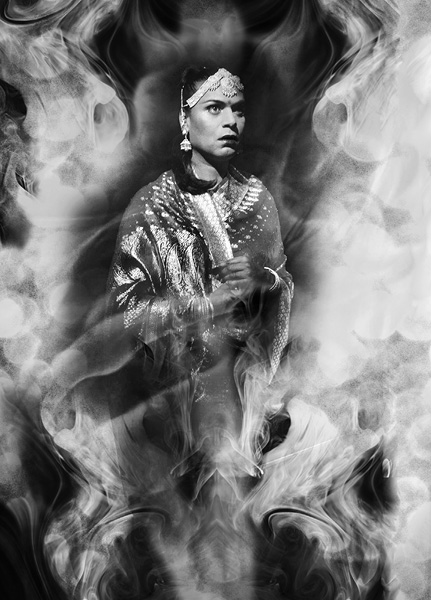
ANDHAKA
first performed on October 12, 2013
Club Tiffany, Ljubljana, Slovenia
performed 35 times in 2013
GEORGE CHAKRAVARTHI
London, UK
995086583g995086583e995086583o995086583r995086583g995086583e995086583@995086583c995086583h995086583a995086583k995086583r995086583a9950865837995086583.995086583d995086583e995086583m995086583o995086583n995086583.995086583c995086583o995086583.995086583u995086583k
georgechakravarthi.co.uk
ANDHAKA
GEORGE CHAKRAVARTHI
“Andhaka” (the blind one: Sanskrit)
Who feels it knows it. It’s concealed in the moment…
Kali, the feminine force, is the Hindu goddess of destruction and creation; a cryptic force of the East associated with empowerment. The name Kali comes from Kala, which means black, time, death and rebirth. Although sometimes presented as dark and violent, her earliest incarnation as an annihilator of evil forces still has influence. Various Hindu cosmologies, as well as Tantric beliefs, worship her as the ultimate reality or Brahman. She is also revered as Bhavatarini (literally “redeemer of the universe”). Comparatively recent devotional movements largely conceive Kali as a benevolent Mother Goddess. Among others, Kali is also an archetype across many religions and cultures of the non-conformist female figure, including Lilith in Jewish mythology, Sheela Na Gig in Paganism and Nephthys of ancient Egypt.
“Andhaka” is a performance experience of the feared divine female set in complete darkness. As a one-to-one performance, individual participants enter a blacked-out space and confront the unknown force of a presence for a length of time. The work relies on the person’s imagination and illusory senses to conjure hallucinatory images in the darkness. During some performances/experiences, the space is flooded with light to reveal and interact with the performer (goddess). The performer and the spectator then participate in a short, gestural interaction led by the participant. There is prerecorded, continuous sound throughout the performance similar to the symbols and clay drums heard in Hindu temples, which is both meditative and transcendental.
The work seeks to determine various notions of fear and of fierce femininity and to analyze the construct of this in historic, mythological and cultural manuscripts seated in the subconscious mind. My main aim was to create an intimate experience with the focus on stillness, darkness (fear) and light (optimism). I wanted to highlight the connection and disconnection one feels when seemingly alone and when in the presence of another being, and how our perceptions and thoughts inform our experiences.
The reaction to the performance came in extremes. Whilst most one-to-one experiences lead people to emotional, often tearful contact, some tapped into their own fears and either ran out during the darkness part of the work or felt threatened when confronted by me as performer. Both reactions were as I expected, valid and integral to the work.